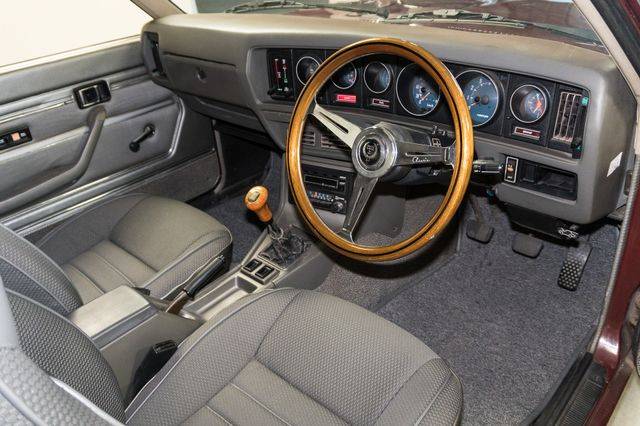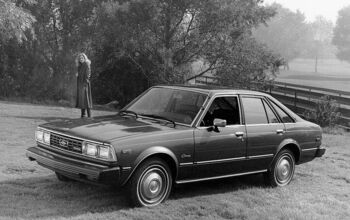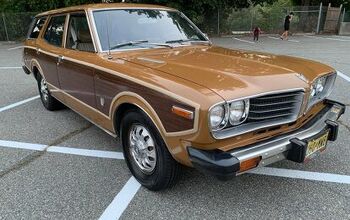Rare Rides: A 1974 Toyota Corona 2000 GT

Today’s Rare Ride is a case of forbidden fruit. Though North American consumers could buy something similar, this Rare Ride was never on domestic shores as new.
It’s the Toyota Corona 2000 GT, from 1974.
Toyota’s Corona line entered production in 1957. A compilation of parts from a recently deceased Crown, it was made to fill the space the (now larger) Crown vacated. Over the years the Corona grew in size and model variation, and became an important global model for Toyota. Additional production began in Australia in the sixties, and by the early seventies it was also produced in Indonesia and South Africa.
After a short fourth generation of just four model years, the fifth-gen Corona entered production late in 1973. By that time it was a midsize entry, and occupied a place between the smaller Carina and the larger, more luxury-oriented Mark II. Body styles included two- and four-door sedans, a five-door wagon, and the rakish two-door hardtop coupe.
As expected, North American Coronas had big, chunky bumpers to meet new crash standards. Though a variety of engines were used in other markets, North American Coronas had just one: the 20R. Toyota liked the 2.2-liter unit for North American applications. Its 97 horsepower also motivated the Hilux and Celica of the period. Transmissions included three- and four-speed manuals, and a three-speed automatic.
For its domestic market only, Toyota built two hotter versions of the Corona. Dubbed the 2000 GT, a sporty sedan was accompanied by a hardtop coupe to form the top of the Corona line. These models used the twin cam 18R-G engine. A two-liter unit designed to fit into the small car tax bracket in Japan, the 18R-G produced 143 horsepower and 130 lb-ft of torque in a car that weighed around 2,200 pounds. North Americans stayed content with their 97-horsepower truck engine.
The Corona faced an uphill battle in the US. Front-drive economy was all the rage, and entries like the new Honda Accord and Subaru DL gained market share. The fifth generation finished off the seventies before it was replaced by a short-lived sixth generation that persevered through 1983. It was not missed, as Americans embraced the brand new front-drive Camry with open arms. By 1983 there was a front-drive Corona in other markets, as the model began its descent. Through the remainder of its life (model year 2002) the Corona turned into a Corolla-like vehicle for markets outside North America, and eventually spawned Caldina wagon variants.
Today’s burgundy beauty is a 1974 2000 GT coupe. All 143 horsepower are shifted via the five-speed manual, and everything looks in original condition. 2000 GT is yours for $25,995.
Images: seller]

Interested in lots of cars and their various historical contexts. Started writing articles for TTAC in late 2016, when my first posts were QOTDs. From there I started a few new series like Rare Rides, Buy/Drive/Burn, Abandoned History, and most recently Rare Rides Icons. Operating from a home base in Cincinnati, Ohio, a relative auto journalist dead zone. Many of my articles are prompted by something I'll see on social media that sparks my interest and causes me to research. Finding articles and information from the early days of the internet and beyond that covers the little details lost to time: trim packages, color and wheel choices, interior fabrics. Beyond those, I'm fascinated by automotive industry experiments, both failures and successes. Lately I've taken an interest in AI, and generating "what if" type images for car models long dead. Reincarnating a modern Toyota Paseo, Lincoln Mark IX, or Isuzu Trooper through a text prompt is fun. Fun to post them on Twitter too, and watch people overreact. To that end, the social media I use most is Twitter, @CoreyLewis86. I also contribute pieces for Forbes Wheels and Forbes Home.
More by Corey Lewis
Latest Car Reviews
Read moreLatest Product Reviews
Read moreRecent Comments
- Kwik_Shift_Pro4X I wonder if Fiat would pull off old world Italian charm full of well intentioned stereotypes.
- Chelsea I actually used to work for this guy
- SaulTigh Saw my first Cybertruck last weekend. Looked like a kit car...not an even panel to be seen.
- GregLocock Bear in mind this is purely a branding exercise and has no significant input from AM. Buying one of these is like buying a Pink Floyd T shirt, no Dave and Nick didn't personally sew it up for you.
- Lou_BC This is the sort of thing that lands 15 billion dollar Honda investments in Canada. One political party tries to undo everything the other one has done.







































Comments
Join the conversation
I see a couple of things. The air cleaners don't look stock - knowing how anal retentive the Japanese manufacturers were about things like that, I'd expect to see a huge oval housing covering both carbs, with a snorkel coming off the front that's tilted down, the big stamped wing nuts at each carb that go pop-pop-pop once they make contact (ridges on the bottoms of the nuts that mate with grooves stamped in the housing - anti-vibration), and something like six of those flip-down clamps they like to use around the perimeter. I also see that the rubber body plugs are missing from the spare tire well.
This a good Rare Ride. I think though for the money a Celica coupe would provide the same enjoyment and looks like a close cousin. Theres a fairly clean orange coupe parked in my in-laws neighborhood that i'm sure is a nonrunner but a good candidate for restoration. I wish I had the time or space.